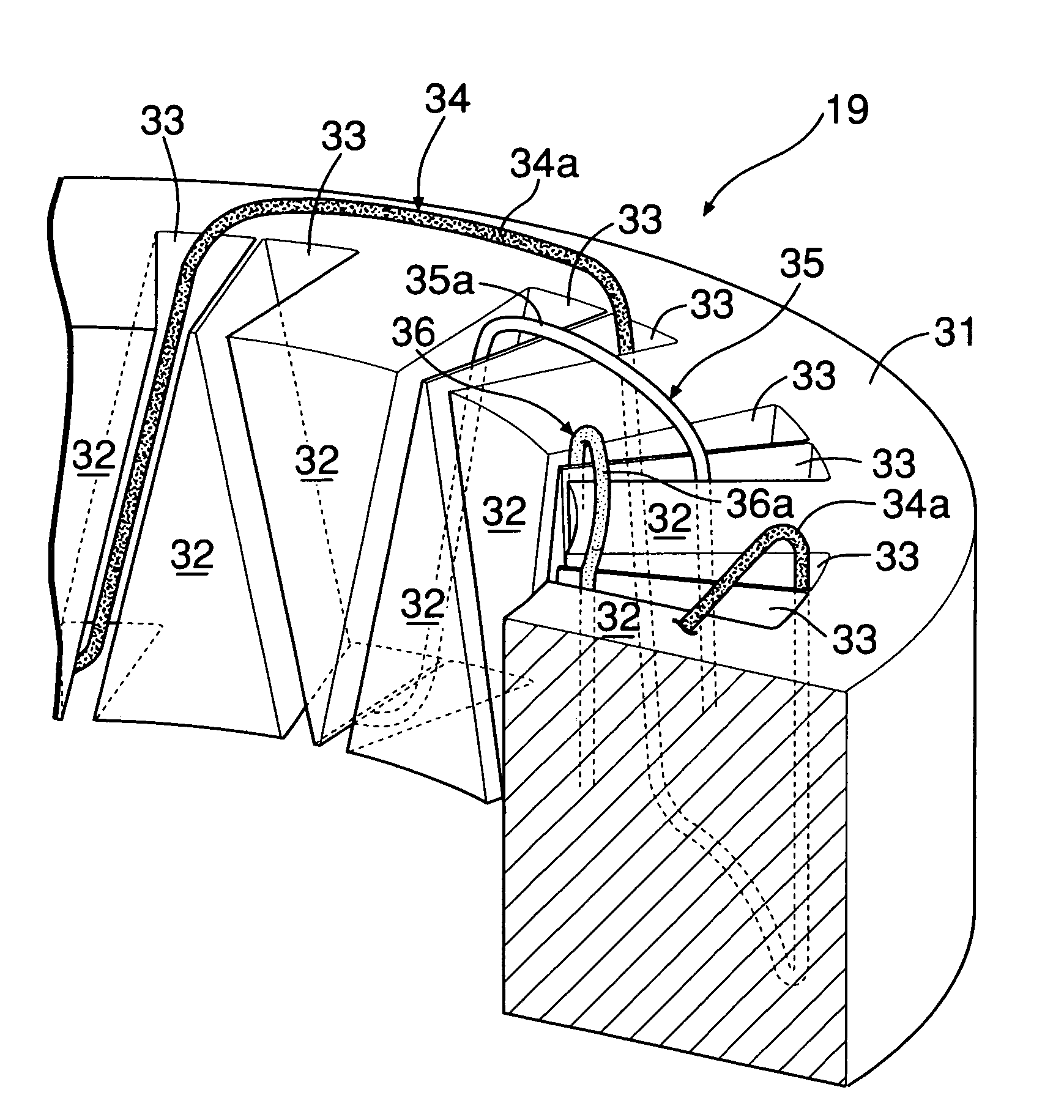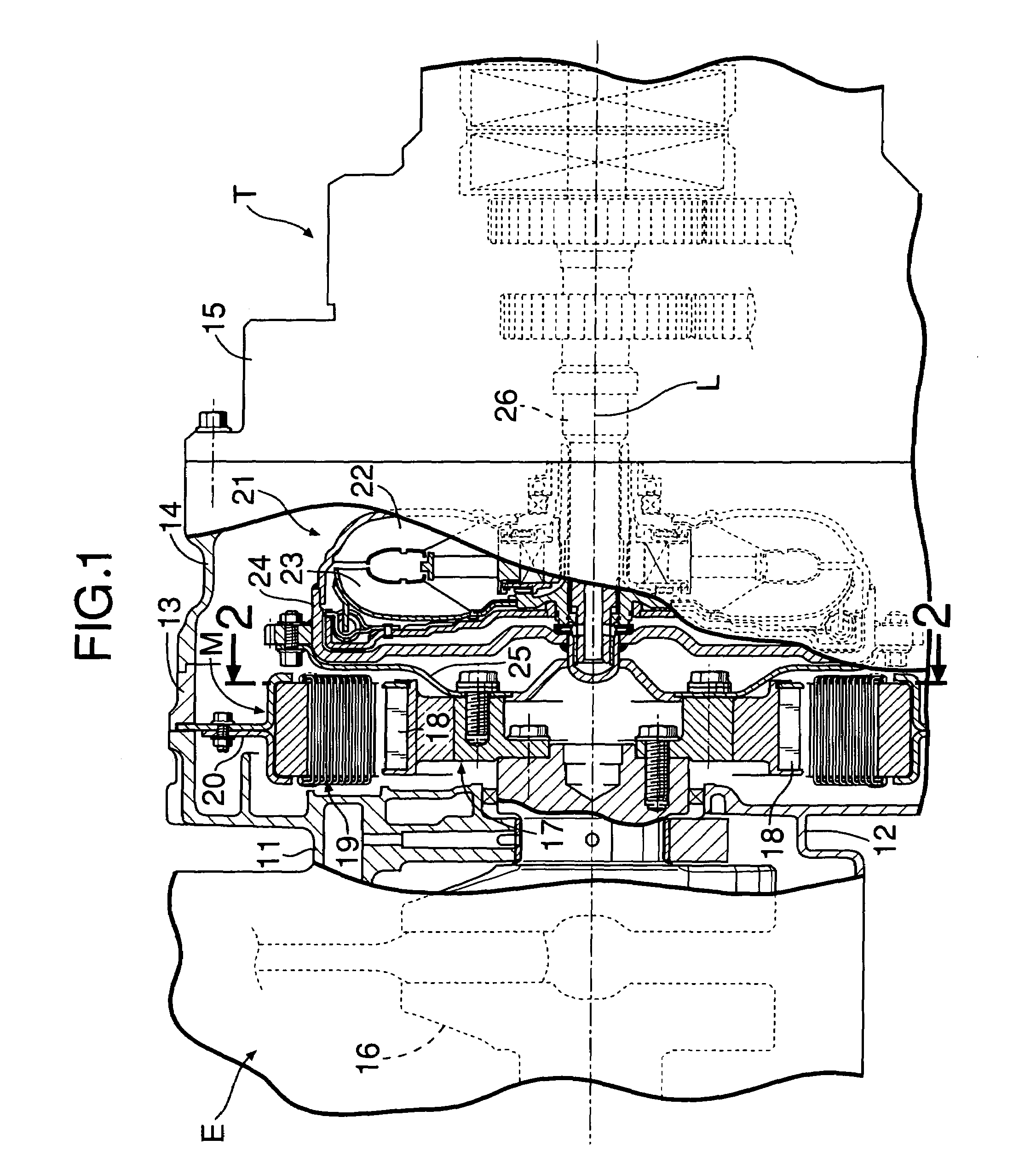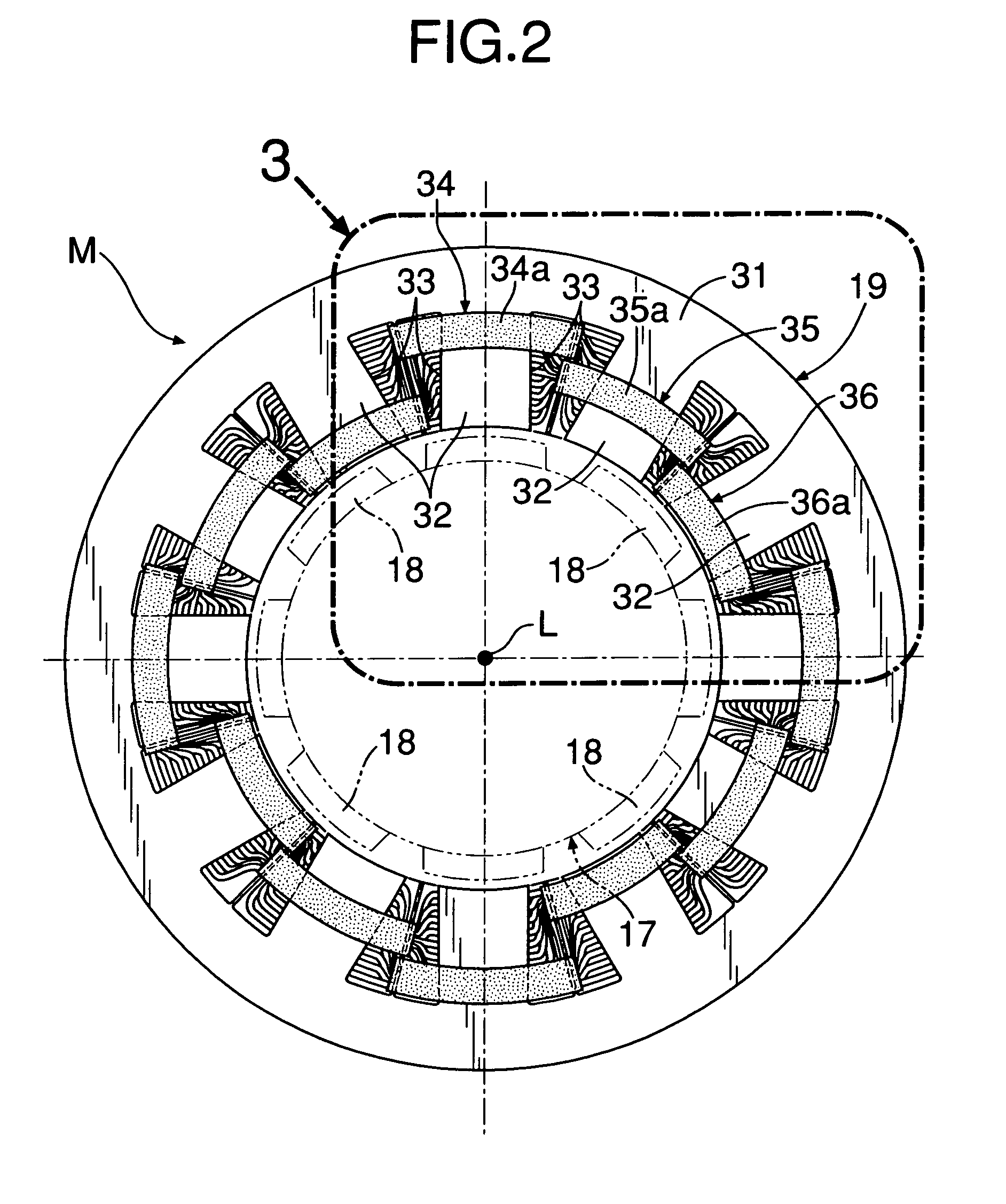Motor stator core with skewed slots and production process therefor
a technology of motor stator and slot, which is applied in the direction of magnetic circuit rotating parts, magnetic circuit characterised by magnetic materials, magnetic circuit shape/form/construction, etc., can solve the problems of deterioration of efficiency and difficulty in reducing dimensions, and achieve the effect of suppressing torque fluctuation, preventing torque deterioration, and shortening the bridging portion of a winding
- Summary
- Abstract
- Description
- Claims
- Application Information
AI Technical Summary
Benefits of technology
Problems solved by technology
Method used
Image
Examples
second embodiment
[0048]the present invention is now explained with reference to FIG. 8 to FIG. 10.
[0049]As is clear from FIG. 8, a stator core 31 and teeth 32 of the second embodiment are formed from a large number of steel plates 32a laminated in an axial direction L of the stator 19. Since the direction of the slots 33 positioned between the teeth 32 is skewed relative to the axial direction L, the shape of the steel plates 32a, forming the stator core 31 and the teeth 32, varies depending on the position in the axial direction L in the stator 19.
[0050]That is, as is clear from FIG. 9, each steel plate 32a includes a first cutout group formed from eight cutouts a and a second cutout group formed from eight cutouts b to correspond to sixteen slots 33. The eight cutouts a, forming the first cutout group, are arranged at equal intervals of 45° in the circumferential direction. The eight cutouts b, forming the second cutout group, are arranged at equal intervals of 45° in the circumferential direction...
PUM
 Login to View More
Login to View More Abstract
Description
Claims
Application Information
 Login to View More
Login to View More - R&D
- Intellectual Property
- Life Sciences
- Materials
- Tech Scout
- Unparalleled Data Quality
- Higher Quality Content
- 60% Fewer Hallucinations
Browse by: Latest US Patents, China's latest patents, Technical Efficacy Thesaurus, Application Domain, Technology Topic, Popular Technical Reports.
© 2025 PatSnap. All rights reserved.Legal|Privacy policy|Modern Slavery Act Transparency Statement|Sitemap|About US| Contact US: help@patsnap.com



